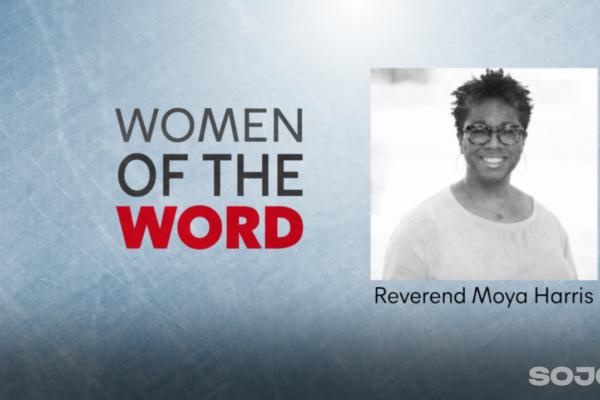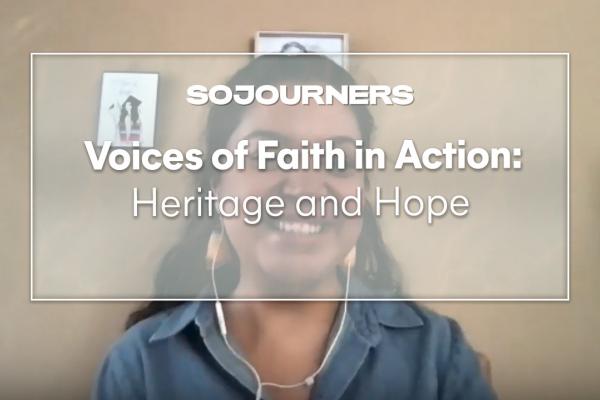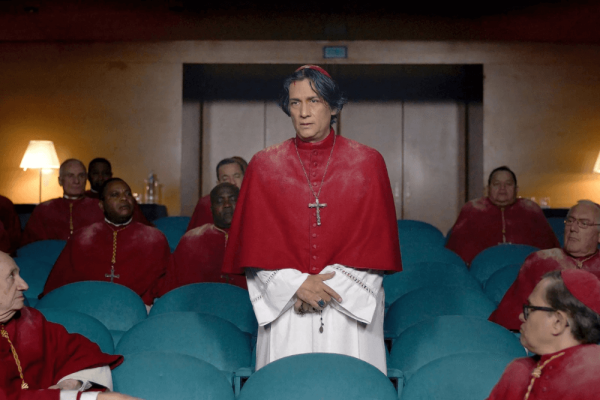The rain picks up as my husband and I take turns dashing inside an old church in the Irish countryside while the other waits in the car with our sleeping kids. On my turn, the church is empty. I close the door behind me and enjoy the silence in my ears, roaring rain outside. I’m stopped in my tracks as my eye catches a single Scripture etched on the sidewall:
And that rock was Christ
1 Corinthians 10:4
As a verse for St. Patrick’s Ireland, it makes perfect sense.
Author Thomas Cahill tells us that St. Patrick’s approach to spreading the gospel in Ireland was unique among early missionaries, in that he didn’t try to erase the culture and religion of the people in the land. He took what they already intuitively knew, of the divine being present in all living things, and he added to their story.
Druid folklore and the Irish concept of “soul friends” was celebrated and passed down with Patrick’s new converts. With his own “earthiness and warmth,” he won the Irish’s affection and influence, rejecting the way of the church-led empire surrounding them. While the rest of Europe was bloody and chaotic after the fall of the Roman Empire, Patrick led Ireland in the way of unprecedented peace.
Cahill writes,
Patrick, indeed, seems to have been attracted to the same kind of oddball, off-center personalities that attracted Jesus, and this attraction alone makes him unusual in the history of churchmen.
The monastic communities that followed in Patrick’s stead grew into large population centers throughout Europe. Theirs was a time of great scholarly and artistic flourishing — fruit that is still enjoyed today, and felt in the warmth and hospitality of the Irish people. Cahill’s How the Irish Saved Civilization painstakingly documents this priceless contribution. What would have been lost in the European shift away from knowledge and study was rescued and preserved. Irish monks and scholars spent the better years of their life copying ancient literature and history, all the while illuminating beautifully detailed gospel manuscripts with brightly colored swirls and knots and animals — and took pure enjoyment in it.
A Celtic understanding of the gospel was a marriage of two great incarnations: Christ in all of nature, that divine spark or energy that animates the universe and lights up humanity (what John calls the Word or logos of God); and Christ as human dwelling on the earth.
This is hard for a modern-day Protestant like myself to wrap my head around. My own tradition has completely divorced God’s self in the cosmos, the divinity of the earth and all that is in it, with God’s self in Jesus the Christ. And as a mother grappling with what theology to teach my children so that the next generation will be more loving, this divide has implications for how we treat our fellow humans and the earth.
Tragically, the separation of spirit from matter has tainted the way we see all of humanity. In the past, it was used to justify violence against the Native Americans, and in the more recent past we’ve dismissed thousands of casualties from wars in the Middle East. We have leaders today who consider war in Korea palatable because “if thousands die, they’re going to die over there.” This is a direct result of a theology that cares more about souls than it does bodies. It’s much harder to love our neighbor if we don’t see the divine, the Christ, within them. It makes it much easier to characterize entire swaths of people groups who don’t have “Jesus in their hearts” as being the enemy. It continues to pervade modern day missions that typify non-Christian cultures around the world as savages living in darkness, rather than looking for the light that is already present and using that as the starting point.
Our modern theology that divorces spirit from matter has wreaked havoc on our environment, too. If Christ isn’t seen in creation, then who cares about what happens to our rivers, oceans, and lands? How can we embrace the verse, And that rock was Christ?
J. Philip Newell threads together a long chain of mystics throughout the ages that have preserved this counter-theological tradition, usually in opposition to the dominant empire and religious elites. It’s been passed down from the misunderstood Pelagius to Ninian, whose church formed St. Patrick. Then onward, to the ninth-century philosopher John Scotus Erugina, then to Julian of Norwich, Teilhard de Chardin, George MacLeod, and in the imagination of George McDonald. In the tradition of John, who heard the heartbeat of Christ when he leaned against Jesus at the Last Supper, the mystics in the Celtic tradition tuned their ears to the heartbeat of God in the whole universe. From the pulsating stars to the drumbeat of music, the forgotten tune of the presence of God in all things is both a symphony all around us, and a stirring deep within.
The “Garden of our Origins,” writes Newell in his book "Christ of the Celts," is the forgotten tune, a yearning for love, unity and wholeness, buried deep inside mankind. Sin and evil have corrupted and altered our natural state, but deeper still is something holy and beautiful. Salvation is more of a reminder of who we are in Christ — made in his very image, and born out of unending love.
This St. Patrick’s season, I’m choosing to follow his tradition. I see light within my neighbors. I see their goodness. I see Christ in them. And though I don’t have all the theological answers figured out for my children, I’ll teach them to practice love, to look for the light of Christ, to listen to the heartbeat of God beating in all the earth.
Got something to say about what you're reading? We value your feedback!







